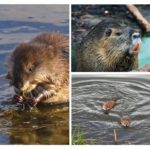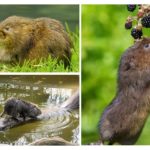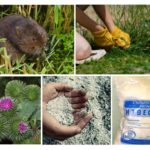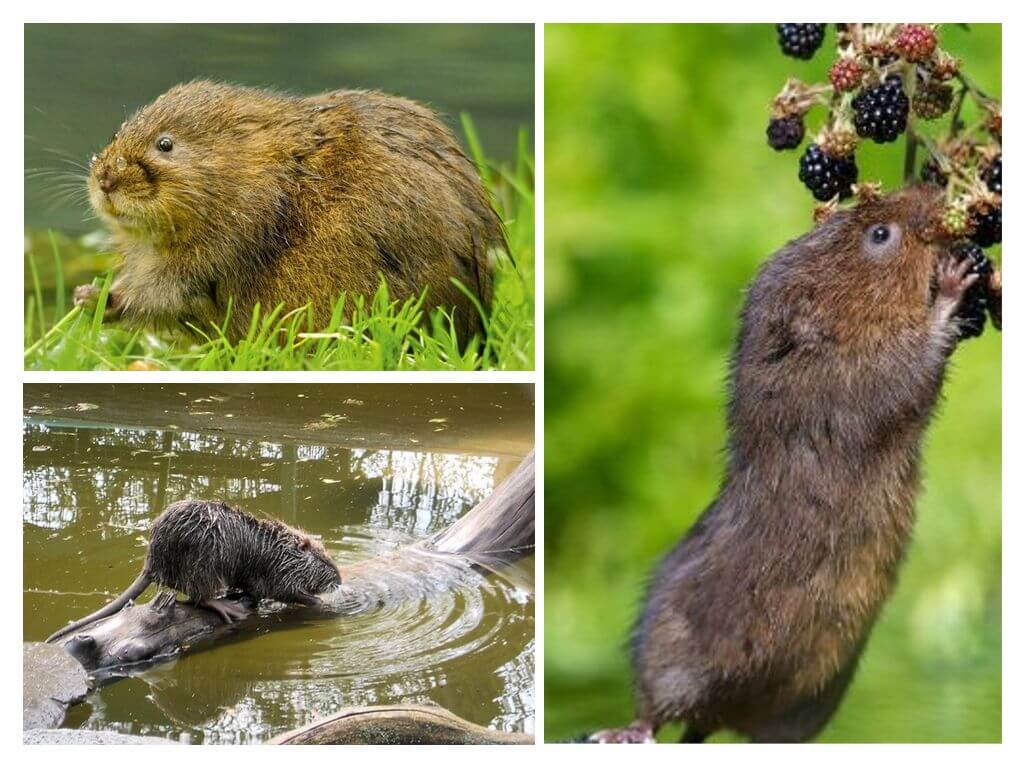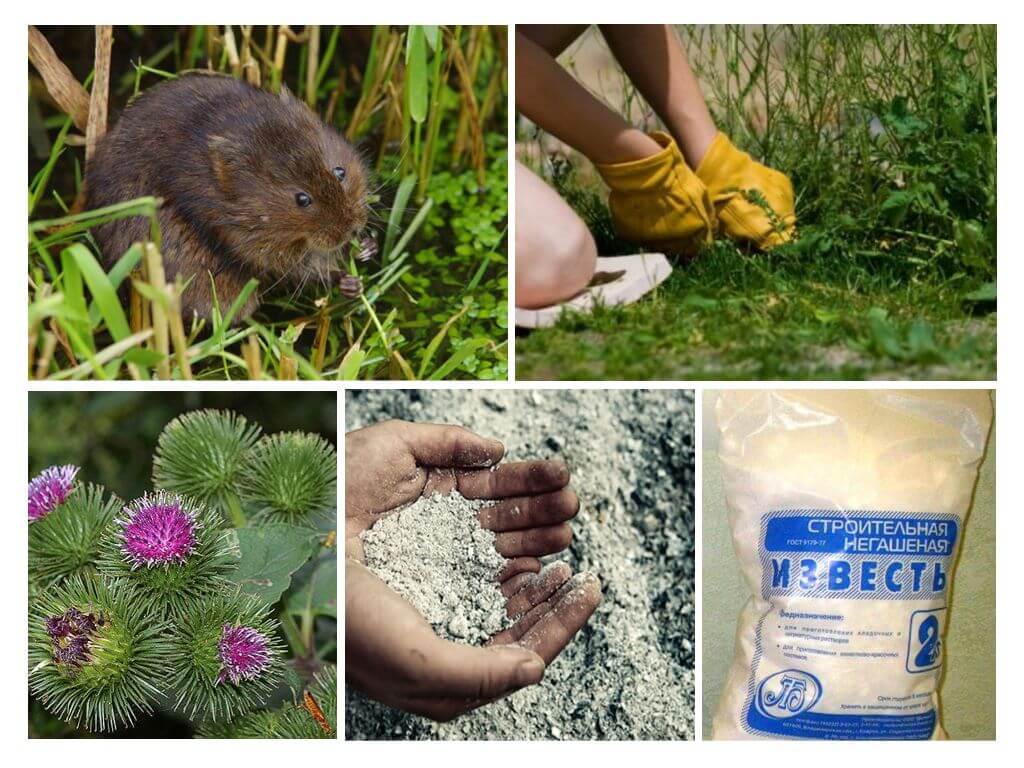Water rats
Content
- Water rat
- Habitat of rats
- Extermination of rodents
The water rat, also known as the European vole, belongs to the family of hamsters. To call a rodent may be different. The natural habitat is the area in close proximity to water bodies. Less common in the fields, meadows, gardens, gardens. By the land person is selected during floods, fires, with the onset of cold weather.
Appearance Description
Water rats have similarities with normal gray ratmuskratCharacteristic appearance is determined by the body, short, muzzle-cut, small, almost imperceptible ears, fluffy fur. Wool is smooth and silky, much longer than that of a regular rat. Because of her legs seem short.
What a water rat looks like, experts know, the others confuse it with rodents familiar to humans. Below is a water rat in the photo, where you can clearly see the differences.
The eyes are small. Diagnosed by the presence of yellowish incisors in the middle part. The length of the tail of a water rat is ½ of 2/3 of the body parts. Somewhat shorter than the tail of an ordinary rat. It has a round cross-section, is covered with short hair, ends with bare skin, on the tip there is a noticeable brush 0.5 cm long.
The body length of the water rat depends on the habitat and geographic location. In one territory there are animals with a body from 110 to 260 mm. A rodent weighs 120-330 g. The average weight of the animal is 140-250 g. The sea rat in the photo below has larger sizes. River rat in the photo with more rounded forms, short body.
Wool has a significant layer of underfoot.The appearance of the rodent does not change depending on the season. The color is one-color - in gray, brown, black tones. Some individuals have a white stripe on the tip of the tail.
On a note!
Fur animal has not bypassed people. Fur is used for sewing outerwear, hats for women. Products turn out brilliant, accurate, warm.
Habitat
Vole is found throughout the world. Water rats live in forests, fields, steppes, deserts. Prefer habitat closer to the water. They know how to swim well, they like coolness, but not cold.
Where a water rat lives is interesting to many. Some representatives of mankind are trying to find a fur animal with the purpose of sewing expensive products, others - to destroy.
Water rat makes holes in the ground. Builds numerous passages, underground passages. It breeds, feeds offspring, winters. With the onset of adverse conditions - flooding, lack of food, moved to a drier area. Periodically returns to the water.
On a note!
In most cases, underwater rats prefer to be found near the marshes. The standing water quickly freezes with the onset of cold weather.By the middle of autumn, the animal begins to look for a more suitable habitat for wintering. Human land is attracted by loose earth, warmth, abundance of food.
Animal nutrition
Than the water rat eats, it is easy to guess. The animal, despite its cute appearance, is a predator. According to the way of feeding, it practically does not differ from the usual domestic rat. It can eat cereals, groats, vegetables, gnaws trees in large numbers, is not averse to eat other small mice.
Scientists have noticed that the vole population increases 1 time in 8 years. Individuals begin to colonize all territories suitable for life, causing damage to agriculture and gardens. During the warm season, an adult reproduces 2 offspring. By the fall rat pups have time to grow up, pests on a par with adults.
Harm to man
The water rat feels great on the grain fields and gardens. When settling numerous damage is enormous. The animal eats not so much grain as it spoils the fields. Digs numerous moves, burrows, leaves a mound of earth on the surface. Stems fall, intertwined.Grain on the ground disappears, loses its properties, presentation.
A pest of crops can ruin the crop of carrots, beets, potatoes. Do not attract only legumes, onions, garlic. These beds are bypassed. In the gardens, young trees, old ones, suffer from water rats. The animal nibbles the bark, destroys the seedlings, feeds on the fruits.
On a note!
In the presence of grain, vegetable stores prefers to base in these places. Winters safely, with the onset of spring sneaks closer to the marshes, rivers, one environment.
Water rat is a carrier of serious diseases - leptospirosis, fever, tularemia, transmission diseases. Can eat the infected body of a dead animal, brings infection to a person. The issue of pest control concerns not only crops, but also health.
Getting rid of the water rat
Human efforts are aimed more at exile than at destruction. Use rat poison inhumane, dangerous. Domestic cats, dogs and other animals that are natural enemies of rats can suffer from poisoned bait.The exceptions are large fields, premises - barns, storage. There you can fight rat poison.
Traps, rat traps use inappropriate in open areas. In barns, storehouses, cellars, the tool shows itself well. As effective means of rats even glue traps are used where possible.
The main task is to drive out of the garden, field, garden or prevent penetration.
- To fence your plot of land, garden with a fence with small gaps, concreted below or put a number of bricks. Undermining the earth water rat will not.
- In the garden to plant in its various frequent legumes, onions, garlic, peppermint. Rodents do not tolerate these smells.
- Wormwood, tansy, chamomile, peppermint are scattered on the beds.
- When detecting burrows, they are stuffed with rags dipped in kerosene, gasoline, naphthalene, and acetone. To keep the smell for a long time, the rag is placed in a plastic bag, a small hole is made in it.
- Singe wool, put near the burrow. This smell drives out pests almost immediately.
- In the garden to scatter the balls of burdock. Weed are afraid of water rats because of the spines.It sticks tightly to wool, restricts movement, gives a lot of inconvenience.
- Sprinkle wood ash. It irritates the skin, when it enters the stomach, it causes frustration. Constant poor health forces the rodent to leave the designated territory.
- Trees are coated with lime in combination with blue vitriol. In the autumn, a belt is made of different materials of a pine branch, plastic bottles, roofing felt, etc.
Fight against rodents is conducted in the national ways. The main task is to expel from the territory, to prevent re-penetration. Recklessly destroy the fur animal is not worth it.

